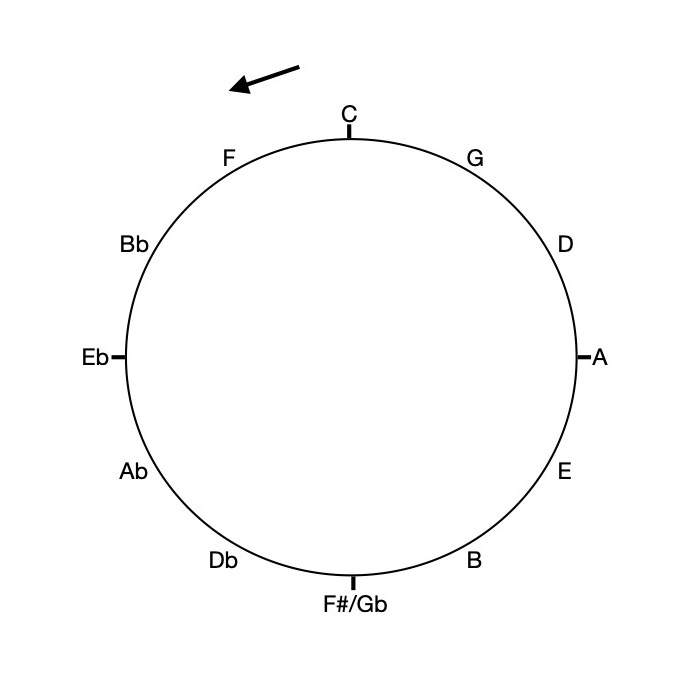
As most of us musicians and music students know, the circle of fifths is notably helpful when figuring out what key a piece of music is in looking at its key signature. But it also has practical uses and can indeed be seen as the theoretical framework for what is commonly referred to as cycle 5 root motion. Cycle 5 root motion is often used as a way of traveling through all 12 pitches of the keyboard in order to work on anything, from a snippet of music to a whole tune, in all 12 keys. It also underpins the concept of the widely used II-V-I progression.
To go through the cycle, simply begin on any given note, go down a perfect fifth or up a perfect fourth (for a comprehensive review of intervals, click here) to reach the second note. Once there, repeat the process: go down a perfect fifth or up a perfect fourth and reach the third note. Repeat again, and again, and again… Until you are back at your starting point and have completed the cycle!

Oftentimes, you’ll see the circle of fifths starting and finishing on the pitch C (as in the example above). But you can of course begin and end at any point in the cycle. Actually, it might be a good idea to start at different points in the cycle every time you practice something in all 12 keys: repeated transposition can indeed be quite challenging and mentally exhausting, and more than once have I stopped half or a third of the way through the cycle, and forgotten where I left off the next day… So beginning on different pitches every time makes it more likely that you will eventually get through the whole cycle, or at least that you’ll cover some of the more unfamiliar keys!
When you start and end on C, unfamiliar keys (such as Ab, Db, Gb/F#, B…) are located towards “the middle” of the cycle, whereas the more familiar ones (fewer flats or sharps) are at “the beginning” and at “the end” (in quotation marks because a circle obviously has no beginning, no middle, and no end!). Beginning the cycle on say the pitch Ab is a way to ensure that you’ll venture through unfamiliar territory first during practice!

